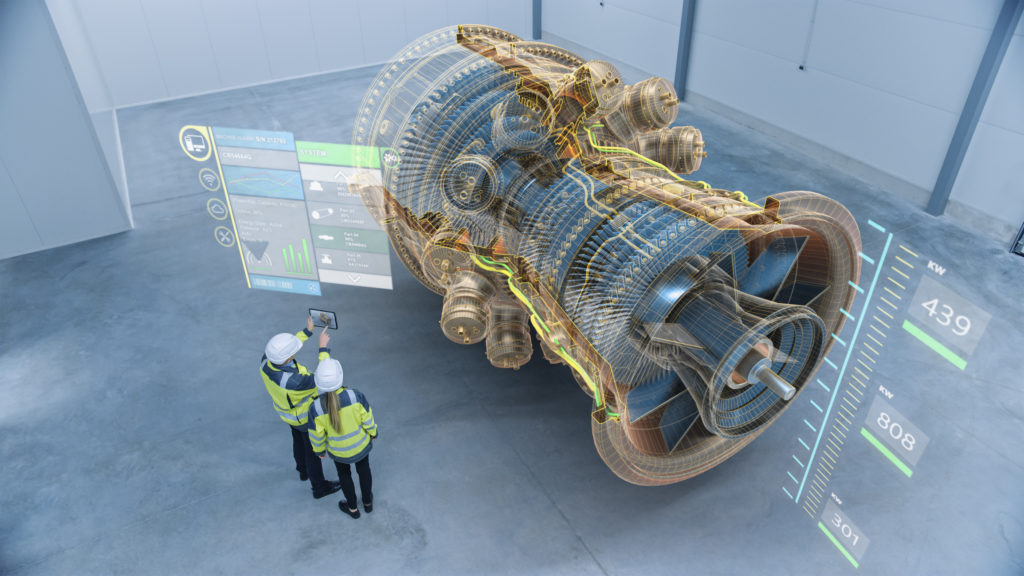Maintenance practices are undergoing a major transformation thanks to cutting-edge technologies and innovative strategies. From predictive analytics to the integration of the Internet of Things (IoT), the trends redefining industrial maintenance no longer simply keep machines running.
They aim to optimize operations, reduce downtime, and encourage sustainable growth. That’s why it’s crucial to stay informed about these trends, which improve scalability, quality, and process efficiency while adapting to ever-changing environments.
According to the McKinsey Global Institute’s 2024 report , structural changes impacting both Europe and the United States will continue to redefine labor demand. Technological advances, particularly in artificial intelligence (AI), are expected to boost productivity while transforming labor needs.
At the same time, structural challenges such as an aging workforce, rising healthcare needs (more pronounced in Europe), and new priorities, such as climate change, will also influence this demand. Some trends, accelerated by the pandemic, appear to be here to stay, such as the spread of remote work and the rise of e-commerce.
Table of Contents
- Emerging technologies that are revolutionizing the maintenance industry
- 5 trends in industrial maintenance
- 1. Immersive technologies
- 2. Additive manufacturing
- 3. Industrial Internet of Things (IIoT)
- 4. Data collection and analysis
- 5. Maintenance as a Service (MaaS)
- How to prepare for changes in industrial maintenance?
Emerging technologies that are revolutionizing the maintenance industry
Many businesses are reaping significant benefits from technological advances and productivity gains. This is particularly evident in the range of equipment maintenance processes, which are now largely aided by IT, cloud computing , Big Data, the Internet of Things (IoT), and burgeoning artificial intelligence.
“As Europe looks to the future, automation, AI, and other trends offer opportunities for increased productivity growth, but also drive faster job transitions. Business leaders and policymakers will need to make critical choices about the scale of technology adoption and investment, while ensuring workers are trained and redeployed for the jobs of tomorrow.”
5 trends in industrial maintenance
1. Immersive technologies
Virtual reality (VR) and augmented reality (AR) are increasingly present in the workplace, giving employees the ability to see and perform tasks that were previously impossible. From next-generation immersive training to remote maintenance, these technologies are being adopted by a growing number of industries.
Additionally, businesses can leverage VR and AR to experience the physical world from a new perspective, using 3D models of equipment and processes to better analyze and solve problems.

Industry 4.0: Two engineers standing and discussing in a factory workshop with a 3D augmented reality model of a giant turbine engine. Graphic visualization. High-angle shot. Special visual effects (VFX).
2. Additive manufacturing
The main objective of maintenance is to ensure that all production equipment is operating at peak efficiency. Industries are increasingly turning to additive manufacturing, or 3D printing , which is gaining popularity in both industrial and consumer settings.
The use of 3D printers makes it possible to produce parts for various applications, such as machine components, spare parts, and prototypes. This technology is already being used in fields as diverse as urban transportation , the construction of 3D printed houses , and even the reproduction of human organs !
“3D technology is poised to become a profoundly disruptive force in the global manufacturing industry. The additive manufacturing market, which was initially used for prototyping, will evolve into the mass production of parts and accessories. By 2030, it is expected that additive manufacturing technologies will enable companies to produce finished products at scale.”
3. Industrial Internet of Things (IIoT)
The Internet of Things (IoT) in industrial sectors allows manufacturers to connect and monitor various components of their operations, providing real-time insights. With this data, manufacturers can adjust, optimize, and improve every aspect of their production process.
The IIoT is driving the industry forward by leveraging smart sensors and internet-powered cloud connectivity . Businesses are leveraging the capabilities of the IIoT to improve security, save money, streamline manufacturing, and even create new products.
“The Industrial Internet of Things (IIoT) enables companies to leverage 73% of data that would otherwise remain unused for analysis. With IIoT, predictive analytics can automate the transformation of data into contextual insights. When integrated into an AI system, these insights improve productivity, increase asset life by 20-25%, and reduce maintenance costs by 35%.”
4. Data collection and analysis
Facilities are constantly expanding their data, enabling more accurate modeling, effective forecasting, and innovative data use and analysis. Much data comes from sensors , which are outputs from devices that detect and respond to inputs from a physical element.
Wireless sensor networks allow for monitoring and control of conditions in various locations, such as temperature, pressure, wind speed and direction, vibration intensity, and more. Sensor data is becoming increasingly important in the Internet of Things (IoT).
Leaders must be innovative and prepared for change to reap the benefits for their organizations. Predictive maintenance and predictive analytics enable manufacturing companies to prevent problems, save on maintenance costs, and reduce downtime, while extending the lifespan of their equipment.

5. Maintenance as a Service (MaaS)
By converting maintenance into operational expenses through a subscription model, Maintenance-as-a-Service (MaaS) is revolutionizing the industry by providing businesses with access to cutting-edge technologies and specialized expertise without requiring significant internal investments.
To reduce downtime and maximize asset performance, this strategy uses predictive and preventive maintenance, supported by real-time data and artificial intelligence. Maintenance equipment manufacturers can leverage software solutions, such as computerized maintenance management systems (CMMS), as well as hardware solutions, such as industrial robots and other automation equipment. Additionally, MaaS ensures sustainability and compliance while providing scalability, flexibility, and increased focus on core business operations, transforming how companies manage and execute their maintenance plans.
How to prepare for changes in industrial maintenance?
Today, advanced technologies play a crucial role in various industries, improving the efficiency and productivity of manufacturing and maintenance. However, not all companies yet possess the skills necessary to implement these new technologies.
To prepare their facilities for developments and adapt them to current trends, engineers and managers must be ready to adopt and integrate these advanced technologies. It is essential that they also prepare their workforce for the changes by training them on new tools and processes to ensure a successful and efficient transition.


